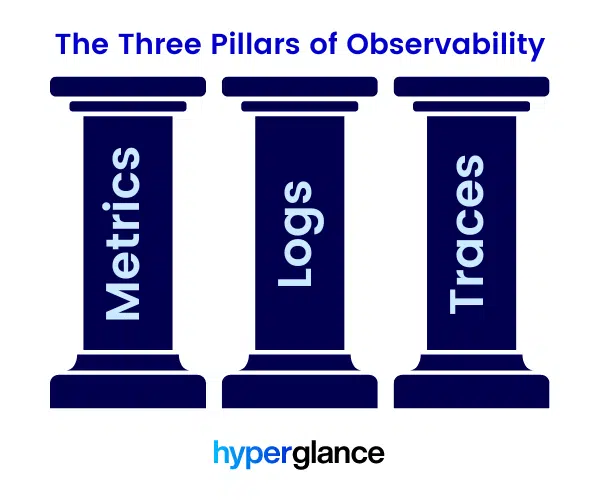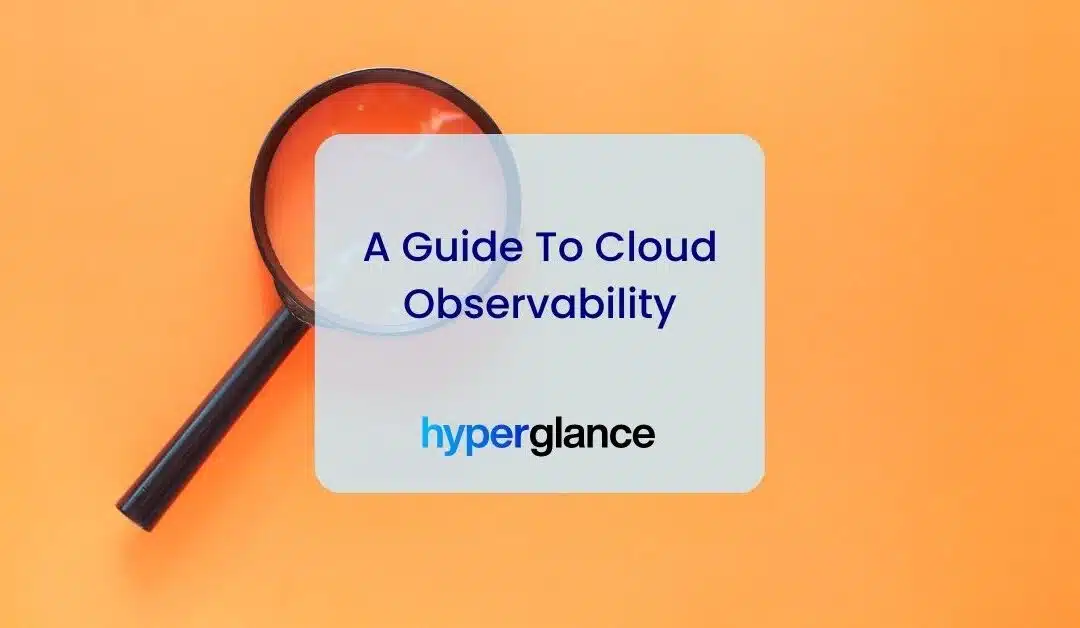Introduction
As the digital landscape continues to evolve, the significance of observability in the realms of cloud computing and DevOps has become more pronounced.
In fact, at the time of writing, Google searches for 'observability' were up over 300% since 2020, proof that something is bubbling over.
This blog post aims to unpack the concept of observability, particularly within cloud and DevOps, and discuss how cloud management software can facilitate its implementation. Let's dive in.
What is Cloud Observability?
Cloud observability refers to the practice of collecting, analyzing, and understanding data from cloud-based applications and infrastructure. It encompasses the ability to gain insight into the health, performance, and behavior of systems and applications running on the cloud.
Cloud observability tools provide a holistic view of your cloud environment, enabling you to identify issues, pinpoint their root causes, and take appropriate action to optimize performance and ensure continuous delivery.
In the context of cloud management software, observability plays a crucial role in helping organizations maintain control over their cloud infrastructure. It allows cloud professionals to monitor resource utilization, identify performance bottlenecks, and proactively resolve issues before they impact end users.
Ultimately, observability contributes to a more efficient and cost-effective cloud environment.
What is Observability in DevOps?

Observability in DevOps pertains to the ability to monitor and understand the internal state of a system or application from its external outputs. In the context of DevOps, observability is crucial in ensuring seamless collaboration between development and operations teams. It enables these teams to proactively detect and resolve issues, maintain the performance and security of applications, and accelerate the software delivery pipeline.
Observability in DevOps goes beyond merely gathering data; it also involves understanding the relationships and dependencies between various system components. This holistic approach enables teams to gain deeper insights into their applications' behavior, making it easier to identify potential issues and opportunities for improvement.
How Do Cloud Management Platforms Help?
Inevitably, DevOps professionals turn to cloud management software as it can play a pivotal role in implementing observability within DevOps practices.
By providing a unified platform for collecting, analyzing, and visualizing data from various sources, cloud management tools empower teams to make data-driven decisions and optimize their software delivery processes.
Why is Observability Important?
Observability is vital for several reasons:
1. Enhanced Visibility
When implemented correctly, observability provides a comprehensive view of your systems and applications, making it easier to identify and resolve issues. This improved visibility is particularly essential in complex cloud environments, where the sheer volume of components and services can make it challenging to maintain control and understanding.
2. Faster Troubleshooting
By enabling teams to pinpoint the root cause of a problem quickly, observability accelerates issue resolution and minimizes downtime. This leads to increased productivity and reduced costs associated with system outages and performance degradation.
3. Continuous Improvement
Observability facilitates continuous learning and improvement, allowing teams to optimize processes and enhance application performance. This iterative approach enables organizations to stay agile and competitive in a rapidly changing technological landscape.
4. Proactive Issue Detection
With observability, teams can detect potential issues before they escalate and impact end users, thus ensuring a seamless user experience. It probably goes without saying that early detection and resolution of problems help maintain customer satisfaction and reduce the risk of reputational damage.
How Do Cloud Management Platforms Help?
Cloud management software amplifies the benefits of observability by providing powerful analytics, inventory visualization, and automation & remediation capabilities.
Marketing-leading tools, like Hyperglance, enable cloud professionals to transform raw data into actionable insights, simplifying the process of identifying trends and anomalies that warrant further investigation.
What are the Three Pillars of Cloud Observability?
The three pillars of system observability are:

1. Metrics
Quantitative data points that represent the performance, health, and usage of your cloud systems. Metrics include measurements such as CPU usage, memory consumption, and response times. These data points allow you to track trends, set alerts for potential issues, and evaluate the efficiency of your cloud resources.
2. Logs
Timestamped records of events and activities that occur within your cloud environment. Logs provide a detailed account of system behavior, which is useful for debugging, identifying issues, and understanding the context of specific incidents. By analyzing log data, cloud professionals can gain insights into the root causes of problems and make informed decisions to address them.
3. Traces
Detailed records of individual requests or transactions within your cloud systems, allowing you to analyze end-to-end performance and identify bottlenecks. Traces help you understand the flow of requests through your services and infrastructure, making it possible to pinpoint inefficiencies and optimize the user experience.
How Do Cloud Management Platforms Help?
Cloud management software can help you harness the power of the three pillars by providing a centralized platform for collecting, correlating, and analyzing metrics, logs, and traces.
This unified approach enables cloud professionals to gain a holistic understanding of their cloud environment and make data-driven decisions to improve performance, security, and reliability.
What is Observability vs. Monitoring?

While both observability and monitoring are essential for maintaining the health and performance of cloud systems, they serve distinct purposes.
Monitoring involves the systematic collection and analysis of data to ensure systems are functioning correctly. It focuses on predefined issues and KPIs, such as resource utilization, error rates, and response times. Monitoring helps teams identify when something goes wrong and alerts them to take corrective action.
Observability, on the other hand, goes beyond monitoring by providing the tools and insights necessary to understand and explore the internal state of your systems. It enables you to discover unknown issues and optimize performance proactively. Observability is particularly valuable in complex, distributed cloud environments, where traditional monitoring approaches may struggle to keep up with the dynamic nature of cloud resources.
The relationship between observability and monitoring can be likened to that of a detective and a security guard. While the security guard (monitoring) diligently watches for predefined threats, the detective (observability) investigates the scene, gathers clues, and uncovers hidden issues that may not have been immediately apparent.
How Do Cloud Management Platforms Help?
Cloud management platforms bridge the gap between observability and monitoring by offering a comprehensive solution that combines the best of both worlds.
These tools enable cloud professionals to set up custom monitoring dashboards, alerts, and reports while also providing the analytics and visualization capabilities necessary for effective observability.
By integrating both monitoring and observability, cloud management platforms empower teams to maintain optimal performance, security, and reliability in their multi-cloud environments.
How to Implement Observability
Implementing observability in your cloud environment involves the following steps:
1. Define Your Observability Goals
Identify the key performance indicators, metrics, and outcomes that matter most to your organization. These goals will help you focus your observability efforts and ensure they align with your business objectives.
2. Choose The Right Tools
Select a cloud management platform and tools that support the collection and analysis of metrics, logs, and traces. Look for solutions that offer seamless integration with your existing cloud infrastructure, provide advanced analytics capabilities, and enable customization to meet your specific needs.
3. Instrument Your Applications & Infrastructure
Integrate observability tools into your cloud environment and ensure they collect data consistently and comprehensively. This may involve adding instrumentation to your applications, configuring log aggregation, and setting up metrics collection for your infrastructure components.
4. Establish a Culture of Observability
Encourage collaboration and knowledge sharing between development and operations teams, fostering a culture of continuous learning and improvement. By promoting a shared understanding of your cloud environment's performance and behavior, your teams will be better equipped to address issues and optimize processes.
5. Continuously Refine Your Observability Strategy
Periodically review and adjust your observability goals, metrics, and tools based on evolving business needs and technology trends. As your cloud environment grows and changes, your observability approach should adapt to ensure it remains effective and relevant.
How Do Cloud Management Platforms Help?
Cloud management platforms play a vital role in supporting these implementation steps by offering a unified tool that simplifies the process of collecting, analyzing, and visualizing observability data.
By leveraging powerful cloud management tools, such as Hyperglance, organizations can more effectively monitor and understand their cloud environments, leading to improved performance, security & compliance, and cost-efficiency.
Conclusion
Observability is becoming increasingly critical for organizations operating in the cloud and leveraging DevOps practices.
By implementing a comprehensive observability strategy and utilizing cloud management software, cloud professionals can gain invaluable insights into their cloud environments, proactively address potential issues, and continuously optimize their applications and infrastructure.
Those organizations that embrace observability can expect to enjoy enhanced visibility, faster troubleshooting, and the ability to remain agile and competitive in a rapidly evolving digital landscape.
What's not to like?
Choose a Powerful Cloud Management Platform
Hyperglance is the trusted cloud management platform for the likes of the US Air Force, HealthDirect, and Gigamon. Every Hyperglance user benefits from:
- Real-time multi-cloud inventory visualization & analytics
- Built-in security monitoring, insights & recommendations
- Cost optimization that typically reduces customer cloud bills by 30%
- Fully customizable automation & remediation capability
Schedule a no-obligation 30-minute demo to find out how Hyperglance can help transform your organization's cloud strategy.

About The Author: Stephen Lucas
As Hyperglance's Chief Product Officer, Stephen is responsible for the Hyperglance product roadmap. Stephen has over 20 years of experience in product management, project management, and cloud strategy across various industries.
